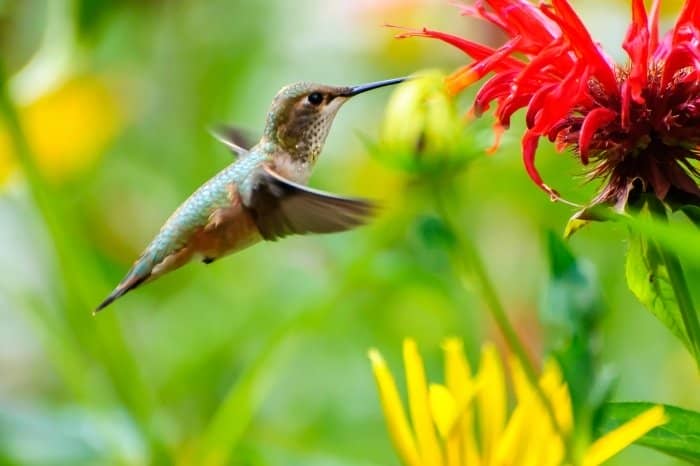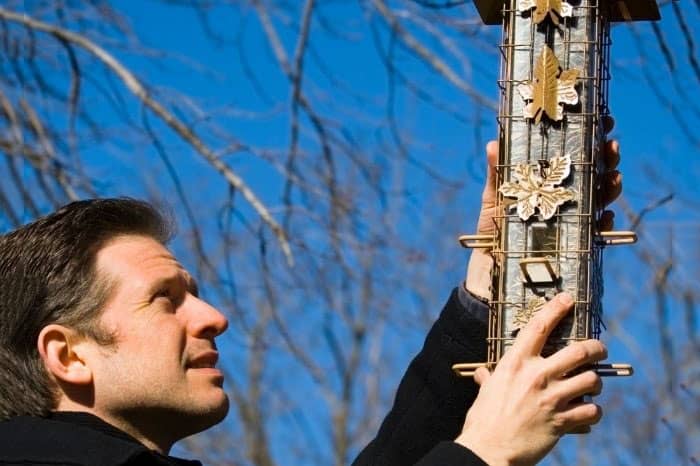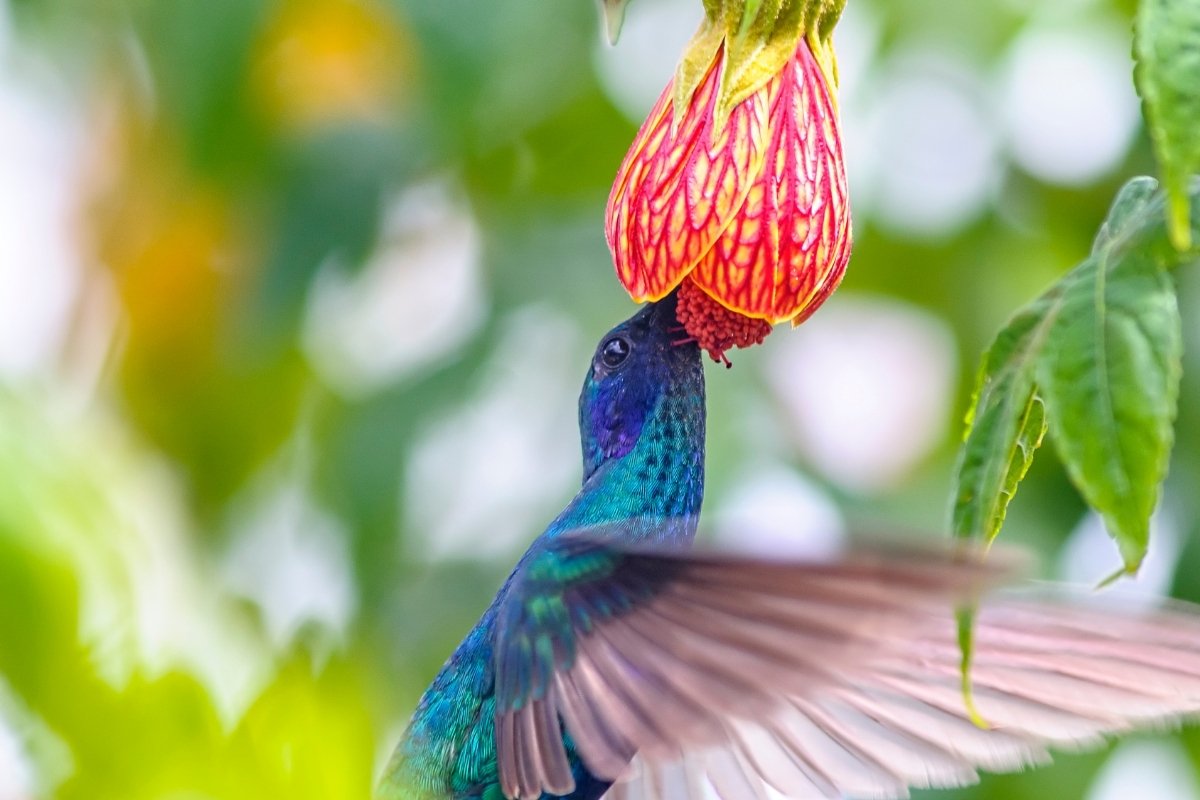Have you heard of protein feeder tubes for hummingbirds? Their diet is not compromised of nectar only; they also need a good portion of protein daily. The hummingbirds are good at sourcing their protein, whether from fruit flies or other insects trapped in spider webs. But if you want to lend them a hand, you can also set up a protein feeder in your garden.
No, these don’t include protein powders or any complicated methods. Moreover, protein feeder tubes are not available for purchase. Instead, think of them as a breeding ground for small insects. Here’s how they work and how to make one in a few simple steps.
Inside The Hummingbird’s Diet
The hummingbird’s diet involves more than nectar. While the carb-loaded liquid gives an instant burst of energy, protein is what actually helps the bird hover for hours.
It’s easy to get confused and think hummingbirds eat only nectar. After all, most people hang feeders or plants around their garden and spot hummingbirds all day long. But we can rarely spot hummingbirds eating insects. So what kind of protein do hummingbirds like?

Hummingbirds go for small insects like spiders, mosquitoes, fruit flies, beetles, and aphids. They might forage a spider web and serve themselves to the tiny insects trapped on the web. They don’t rely on protein feeder tubes in the wild. What is a protein feeder? It’s essentially a plastic container with a few fruit and vegetable scraps where fruitflies feast.
Hummingbirds also consume tree sap. While sap doesn’t contain a large portion of protein, it does have some enzymes and minerals that help with its digestion.
Click Here to Get More Info About:
How To Make A Protein Feeder
There are protein feeder tubes available for purchase, but they’re just plastic boxes. Spare your pockets and have some fun making your own protein feeder. So, how do you make a protein feeder?
The goal of every protein feeder is to attract fruit flies. To attract them, you provide a feast, like banana peels. As the peels decompose, the fruit flies start gathering. Due to the small exits, the fruit flies are trapped. And then the hummingbirds arrive with their long beaks to feast.
We’ve provided the materials and instructions for one protein feeder tube. Test it out in your garden and make as many as you need!
Tools
- Scissors
- Drill
- String or Wire
Materials
- 2-3 banana peels
- 16oz plastic bottle
- Red color for plastic
What do you put in a hummingbird protein feeder if you don’t have banana peels? You can use apple cores, mango seeds, and other fruit leftovers. Almost all fruits and vegetables attract fruit flies, but make sure they’re moist and not dry. Peels and cores work fine, but it’s best to have some flesh left on them.
Instructions: Assembling The Protein Feeder Tubes
Step 1
Start by thoroughly washing and drying the plastic bottle. Remove any labels and glue. Then cut the bottle using a knife or scissors. Start from the upper label edge and cut a straight horizontal line. The goal is to remove the upper third of the bottle.
Step 2
Take scissors and cut half-moons in the part that we just removed to make it look like a flower. Or use sandpaper to smooth out the edges. Then color the outside in red or another bright color to attract more hummingbirds. Let it dry completely before continuing.
Step 3
Back to the bottle, continue to cut the middle part, where the label used to be. You can throw out this part as we won’t be using it.
Package of 80,000 Wildflower Seeds – Hummingbird and Butterfly Wild Flower Seeds Collection
Step 4
Make 4 to 5 straight vertical cuts in the bottom part of the bottle. If the bottle has lines in the plastic, you can follow them. Don’t cut straight to the bottom; leave an inch and a half. Then, punch a few holes a the sides and at the top of each strip.
Step 5
Put the peel in the bottle. Then lean the string through the holes at the top of the strips. The idea is to gather the bottom part and push the string through the bottle’s neck. You eventually get a mini bottle.
Step 6
You don’t need to tie the string; push the upper part of the bottle over the lower and it will hold it closed. Then, use the string to hang the feeder.
Perks of This Type of Protein Feeder
You’ll find tons of DIY hummingbird protein feeder tubes with a bit of research. However, not all of them are safe enough for hummingbirds. We used a hole puncher to make tiny holes accessible only to fruit flies and hummingbirds. No wasps or bees can climb inside.
The small size makes it easier to move, clean, and refill.
Hanging The Protein Hummingbird Feeder
It’s best to hang the protein feeder tubes in a sheltered spot so they won’t get filled with rain. Hummingbirds and fruit flies will find their way to the feeder wherever you decide to hang it.

However, to increase the hummingbird traffic in your garden, we suggest hanging a few protein feeder tubes near your nectar feeders or flowers.
Bottom Line: The Effect Of Protein Feeder Tubes
Everyone knows that hummingbirds love nectar, but very few know how much protein they consume daily. Younger hummingbirds have a greater need for protein, so it’s best to hang these protein feeder tubes during the nesting season.
Providing the nectar and protein at the same spot will significantly increase the number of hummingbird visitors. Remember that these birds have a great memory, so they will come back the following year for more protein!
FAQ’s
[rank_math_rich_snippet id=”s-4d710820-bf1b-4f74-9627-0dc3311e1adc”]


